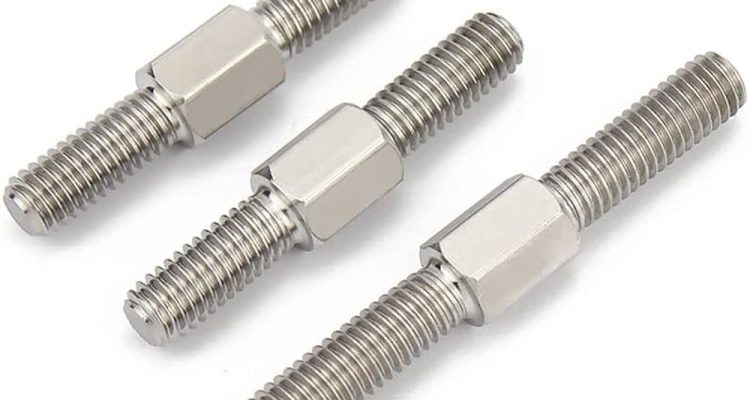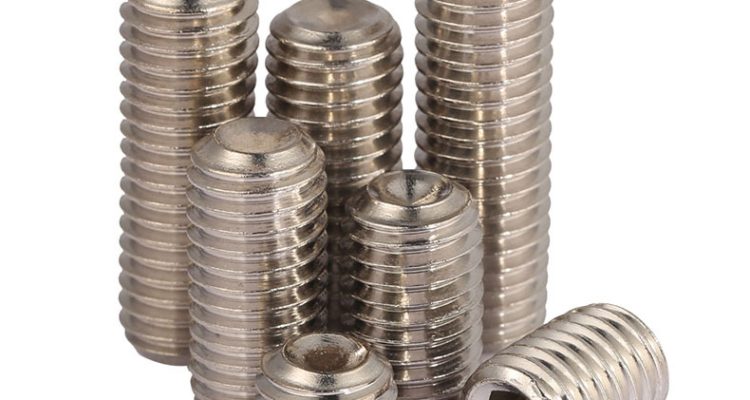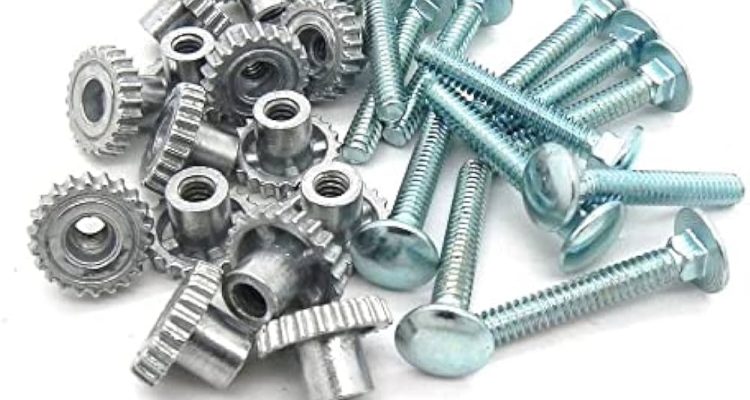
How To Install Stainless Steel 304 Bolts
To properly install Stainless Steel 304 bolts, start by preparing the installation site and gathering the right tools. Follow precise installation techniques, avoid common errors such as cross-threading, and ensure bolts are correctly torqued. Conduct tests to verify the integrity of the installation and consider advanced tips for challenging environments.
Preparing for Installation
The successful installation of Stainless Steel 304 bolts requires adequate preparation to meet the longevity and reliability requirements of the fastened assembly. It provides the Suggested Pre Requirement you have to do before starting Installation includes Tool selection, Environmental Setup.
Choosing the Right Tools
- The choice of the tools is an important consideration if you want perfect results while going to work with Stainless Steel 304 bolts. Now a more deep dive into the “meat” of those tools and what each is used for Here;
- Torque wrench: Applying the precise force is important so a torque wrench is important. Torque wrench should be able to take 20Nm (newton meters) up to around 500 Nm for Stainless Steel 304 bolts depending on the bolt size and application’s requirements.
- Allen keys / socket sets: This will depend on the bolt head. Socket head cap screws are driven by Allen keys; hex head bolts are turned with socket sets. Make it a point to have sizes 2mm through 22mm in the metric set.
- Thread lock holder -In application where high vibration available especially in machinery installations. To avoid further loosen precautious during time use this function thread locker.. Medium strength thread locker will be sufficient.
- Calipers or a tape measure – It is important to be accurate in measuring this as the camshaft bolts will never go through if it does not fit properly. Calipers, ideally accurate to 0.01 mm should be used for measuring both the diameter of the bolt and hole size too
Prepare the Installation Environment
The quality and ease of installation process could be number one priority for you, in which the condition of your environment would provide a significant impact. Detailed steps include:
- Degrease the contact surfaces: Since we are talking about any fasteners, you may need to clean them or remove whatever securing compound that was applied onto their threads. This step will remove any oils, dust or other debris that may inhibit the effectiveness of your bolt.
- Proper lighting: Whether it is an LED work light or headlamps, you need focused illumination to help with installations of components under areas like the hood or beneath structures.
- Secure on work bench: Clamp or vice products to be bolted into place so that they do not move during installation. Of central importance in terms of exact results – and, just as important: safety. especially at large or heavy components!
Ensure Compatibility of Bolts and Components
- Mechanical Failure : Besides corrosion, bolted joints also break due to mechanical failure of the materials being joint.
- The length and diameter of bolts :You want them to match perfectly with the calipers on either side. At least one thread should remain clear of the nut to provide sufficient engagement over the bolt.
- Compatibility with material : No part should cause electrolytic corrosion in contact to Stainless Steel 304 That means no brass-to-brass or aluminum to-well, anything other than its own grade without either a washer in place.
- Threading: The threading of the bolt must fit with receiving threads, either fine or coarse. In practical use, you will find coarse threads are used more often and provide better griping power in most applications.
Organizing Components
It includes some tips of a proper organization that avoids mistakes and saves time during installation process as:
- Layout strategyTitle: Lay the bolts, nuts and washers in order of assembly ORBIS LABELLED BINS OR MAGNETIC TRAYS to hold those pesky little items in place.
- Pre-install assembly: assemble components on the workbench prior to final installation) This step will allow for any mismatches or discrepancies to be caught early before they become a big issue.

Installation Techniques
Efficient installation of Stainless Steel 304 bolts is necessary to have reliable and longlife assemblies. What follows is a step-by-step, easily digestible guide to getting it installed with clear instructions suitable for both the most seasoned and unseasoned installers.
These steps depict the installation process
The installation of Stainless Steel 304 bolts is a very intricate process. Every one of these steps is critical to achieve a secure and effective fit:
- Align the components: First align the two parts you want to join correctly. Just one more step: spot the holes and make sure that thay are perfectly match. If not correctly lined up, this can cause cross threading and in some cases damage. Align the front and rear face of main brackets with alignment pins if required to make sure perfect align else welding will be impossible or difficult.
- Putting The Bolt In : Carefully place the bolt through.ReadIntroduction. If you hit a wall, do not tighten the bolt with more force because that means it is not aligned. No force should be needed to slide the bolt through the holes. When using several bolts, put them in lightly to guarantee all the screws can discover a home without having virtually any stress.
- Applying Thread Locker (if needed): When assembling parts that experience vibration or dynamic load, use medium strength thread locker on the bolts just before fasteneng. This ensures that there is no stress on bolt integrity. Just watch the amount, as too much will make it hard to remove things in the future.
- Do not over tighten, hand tightness: Use your hands to firmly and finish the bolt but do not break it cross-threaded. This is the first step to make sure that your threads are properly engaged. Any misalignment with this part is much easier to correct now as opposed to after the threads are pushed on using tools.
- Applying torque: Set the bolt to a specified manufacturer’s value using a torque wrench. That is very important because of possibility to get the bolt failed or damaging material due wrong torque value. When reconnecting multiple bolts, always tighten in a sequence (such as one side to the other in an alternating crisscross pattern) so that you are evenly distributing the load.
- Align: Once all the bolts are tight, go back over and check/ align everything one more time. Re-adjust if necessary to ensure that the load is evenly spread. An uneven loading will cause a higher degree of wear and ultimately failure.
Special Considerations
Some cases need to be further handled at the time of installation, like:
- Applications with high temperatures: Check differences between the material properties of Stainless Steel 304 regarding thermal expansion and may require bolts re-torque after the first heat cycle. This allows for expansion or contraction that may come from the solid materials which can then diminish how tight it was to start with.
- Highly Corrosive Environments (Like Near Oceans or in Chemical Plants) a lightweight anti-seize should be applied to the threads. Select a Stainless Steel 304 suitable compound.
- With the washer: Adding a flat M12 washers distributes load by tightening, especially corrosion resistance in soft or thin surfaces. Make sure the washer is sandwiched tightly between the bolt and nut or bolt head
Final Inspection
Once installed, thoroughly check the assembly such that every bolt has been tightened according to spec and everything looks physically good. Look for any deformation of the material around bolted areas which can be a dead giveaway to over-torquing.
Common Installation Mistakes
While it may seem easy to pattern the bolts from Stainless Steel 304, there are several common mistakes that can make a big impact not only on how well the assembly will hold together. The key to a successful installation comes in avoiding these mistakes. So without further ado, some useful tips and commonplace blunders to avoid in order to help each bolt do its job as effectively as possible.
Cross-threading
Cross-threading happens when the threads of a bolt are not matched correctly with those in the nut or hole. This misalignment strips the threads which will make it hard to screw in or may result in poor retention.
How to Avoid:
- Slow Start: Thread it in by hand – Work the bolt very slowly at first so that way you can tell if its even catching threads properly or not.
- Adjust to Lined Up: Create sure as you obtain the bolt started it is inline with the hole If not, back out the screw and try again
Over-tightening
Tightening the bolt too much can strip the threads or break said bolt, weakening your overall assembly. That occur in most cases of over torque
How to Avoid:
- Step 3: Use a Torque Wrench Whenever you tighten bolts, always use a torque wrench set to the manufacturer’s recommended setting. The tool keeps the right amount of power applied
- Follow Specification: Only check torque specifications and apply to Stainless Steel 304 bolts. It gets to the sort of belows clamped in place and then when you hit that torque spec, back it off.
Incorrect Bolt Selection
Using the incorrect bolt with this job will culminate to necessary imperfection in being able to keep those materials as one unit Which can happen if the bolt is too short, to a wrong diameter or material.
How to Avoid:
- Check Specifications: Make sure you are even using the right bolts in first place and double check your bolt length, diameter, hallmark. Make sure they will suit your project.
- Measure Twice: Thread the parts to be joined together then measure how long of a bolt will it take for full engagement with threads and just beyond nut.
Doing It for the Environment
If environmental factors like humidity, chemicals or temperature are not taken into consideration the bolts corrode and corrosion can accelerate cracking causing early failure of coating.
How to Avoid:
- Protective Coatings: Use anti-corrosive coatings for areas of high moisture or chemical exposure, and apply an antiseize compound to the threads.
- Temperature Requirements: If the bolted joint is exposed to temperature variations, specify bolts and torque them with how this will change the expansion or contraction of materials.
Lack of Proper Tool Use
The bolt heads can be damaged making them difficult to work with or the torque will not obtained due to using worn out tools, else improper hand position.
How to Avoid:
- Choose the Correct Tools: Ensure that you have a socket or wrench which fits properly over the bolt heads. A good fit prevents movement and allows you to transfer pressure effectively.
- Keep Up With Your Tools: Regularly check your tools for signs of wear and misuse. Have all the damaged or worn out equipment replace to prevents making any rough installations.
Testing and Verification
Once Stainless Steel 304 bolts are in place; full testing and verification is required to prove the integrity and safety of the assembly. This chapter highlights the significant practices and procedures for inspection and test installation of bolts.
Visual Inspection
Visual Inspection : Visual inspection is the most fundamental and easiest way to validate that bolts are installed as they were meant. Immediate feedback on pain points
Effective Processes for Visual Inspection:
- Inspect Alignment: Ensure all bolts are aligned properly and show no evidence of cross-threading
- Check Thread Engagement: Ensure 2 full threads are extending beyond the nut which is usually required for a proper fitment
- Examine for Damage Play close attention to any noticeable stripping, corrosion or damage-on the face of bolt and nut.
Torque Testing
Torque Testing checks to see if the bolts were tightened with an appropriate amount of force; essential for reliability in assembly.
How To Perform Torque Testing:
- Use a Torque TesterAttach a torque tester to the bolt, and apply incremental pressure nudging up on setting.
- Retorque if Necessary: If the bolt moves enough under this test, it may have not had adequate tightening. Make a change For the test, perturbationally Hate toque
Tension Testing
Tension Testing is crucial to guarantee that the bolts have the capacity of facing all the operational loads once they become into use.
Tips on How to Do a Tension Test
- Load: Apply a load to the assembly, slowly imposing operational-stress upon it.
- Measure Bolt Elongation Use a micrometer to measure any elongation or deformation in the bolt.
- Test Performance- Bolts will be same as their initial state before applying load. Anything other than a temporary elongation is overstressing.
Non-Destructive Testing (NDT)
Finally, Nondestructive Testing methods like ultrasonic testing is the most accurate way to identify any internal flaws of a bolt without destroying it for crucial applications.
Key NDT Techniques:
- Ultrasonic Testing: This involves sending high-frequency sound waves across the bolt to detect cracks or flaws.
- Magnetic Particle Inspection: to detect cracks and surface cracking in ferromagnetic materials (Stainless Steel 304).
Routine Follow-Up Inspections
Follow-Up Inspections are executed routinely to verify that bolts remain functional under operational conditions.
Approaches to Regular Inspections:
- Take regular rounds: Fix scheduled check according to your working environment and load condition.
- Record Findings: Record results of each inspection to track trends and catch potential problems before they cause a failure.

Advanced Tips
In some cases with Stainless Steel 304 bolts, the process for installation is somewhat complex to prevent failure even after using it in particular environments and applications. In its final section are more advanced tips which will help engineers work under harder conditions for their designs that go underwater, run warm and where there is lots of dynamic loads or vibrations.
Approaches for Hot Environments
The Stainless Steel 304 bolts have low strength under high-temperature environments due to heat-related phenomena such as thermal expansion.
High-temperature installations pointers
- Proper Lubrication: Various high-temperature lubricants are used to avoid bolts seizing or galling on assembly.
- Pre-Load Planning Take into account the Stainless Steel 304 Expansion Coefficient. For high-heat applications in excess of 500°F, it may further be required to first under-torque the bolts so that they can expand and then train themselves into proper tension through operation.
- Inspection and Retorque:Bolts in high-temperature environments can also experience thermal cycling, causing them to loosen over time. Keep an eye on these bolts and consider retorquing periodically
Corrosive Environment or Underwater Installation
When it comes to installing fasteners underwater or in extreme corrosion prone applications you must take extra steps and precautions for your so bolts do not corrode & have an early failure.
Installation Tips for Corrosive or Submerged Applications:
Coatings on Stainless 304 bolts are widely applied which better the corrosion resistance and appearance of stainless.
- Sealing and Isolation: This could include isolating the bolted joint with a coating of silicone or just layering on some epoxy to help keep out any corrosive elements.
- Appropriate Tools: Ensure the use of tools designed for underwater safety, resistant to corrosion and capable as intended in submerged conditions.
Dynamic Load & Vibration Resistance
Structural failures are most common in connection to vibration and dynamic loads that loosen bolts, causing the entire joint to come apart. These problems can lead to installation, so it is important that you fix all these issues during the setup stage.
Tricks for Dynamic and Vibrational Environments:
- Locking Mechanisms: Use locking washers, nylon insert lock nuts or adhesive thread locker compound to ensure bolts do not vibrate loose.
- Load-Cycling Evaluation: Bolts subjected to variable loads in service should be qualified for fatigue load effects. Opt for higher fatigue strength rated bolts for such applications.
- Vibration Damping: These acts by absorbing the forces that generally vibrate and putting it at a hold level to reduce of failure such as bridge imposing super pose.
Customized Bolt Designs
The reality is that many times, standard bolts do not satisfy the exact necessities of especially specialized applications.
Tips for Custom Bolt Designs:
- Unique Thread Patterns: Think about custom thread patterns that deliver increased grip strength in critical areas.
- Tailored Head Geometries: head geometrical pattern can be customized to spread load more efficiently, or to facilitate access in areas where standard bolts may not fit.



